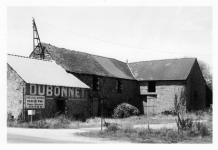|
Boots Comet 100 |
Manufactured or assembled in Italy from (Before) 1969 to (After) 1969.
Index of rarity in France: Rare (among non-specialized garage sales)
Inventory number: 6719
See the complete technical specifications
Chronology of cameras Boots
Boots is a pharmacy chain with a history of more than a century. Quickly, pharmacists with the necessary chemistry skills for photo preparation and development started selling everything related to photography, including cameras.
It was only in the mid-20th century that the photographic activity gained independence at Boots. As Boots is not a manufacturer, it simply placed its name on cameras from other brands. This practice is well known.
The catalog states that this model was manufactured in Italy, confirmed by the fact that "Comet" is a name given by Bencini to several of its most basic models.
In the photo, it can be seen that the word "Boots" is inscribed on the front. However, does this mean it is an exclusive for this distributor? The most similar model we know from Bencini is the Comet 200.

Starting in the mid-1960s, Bencini followed the trend towards simplicity initiated by Kodak and its Instamatic 126 cameras. The first models, starting from 1966, were named Unimatic and were made with a serious approach. In 1968, Bencini introduced a new series of 126 format cameras, primarily made of plastic. For these cameras, the manufacturer revived the name Comet, which the brand had used since the late 1940s.
The Unimatic cameras were intended for both domestic and international markets, while the Comet models were more geared towards the Italian market.
The Comet series included several models, all capable of using the Flashcube and thus requiring a battery. Starting in the early 1970s, following Kodak's lead, Bencini adapted existing models for the use of the Magicube. Since the Magicube did not require a battery to initiate, the previous cameras were modified at a lower cost, retaining their name but with an added "X" to indicate Magicube compatibility. Later, new models were introduced, with some of them ending in "XL," signifying the presence of a winding lever (starting from 1979).
Interesting links or bibliography :
Add a link or element of bibliography, a picture taken with this camera, a picture of box or an ads about this camera
Your photos taken with the same camera:
Cameras from Ebay France (Boots) (Uploaded each 3 hours)







